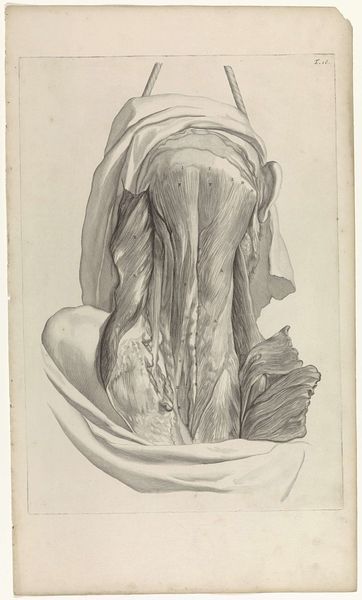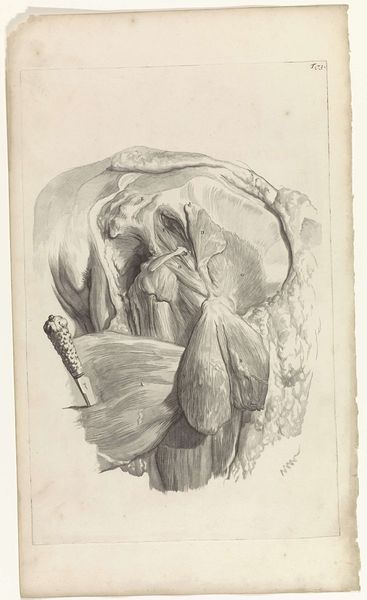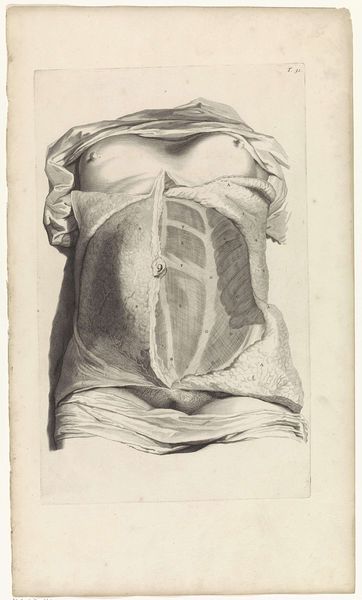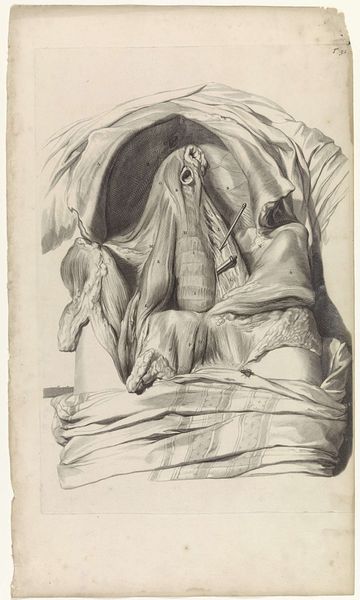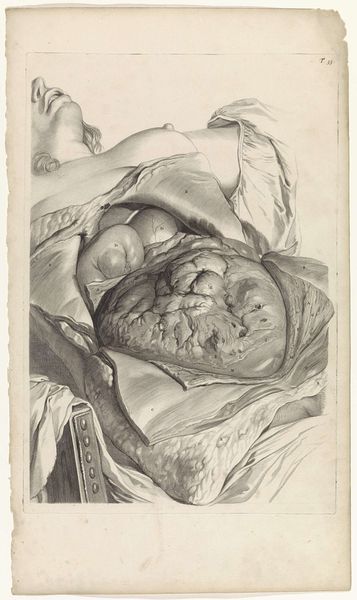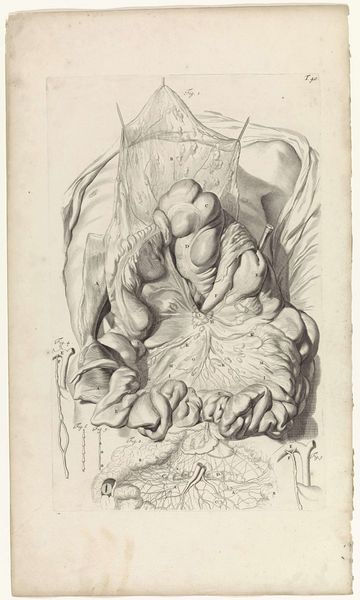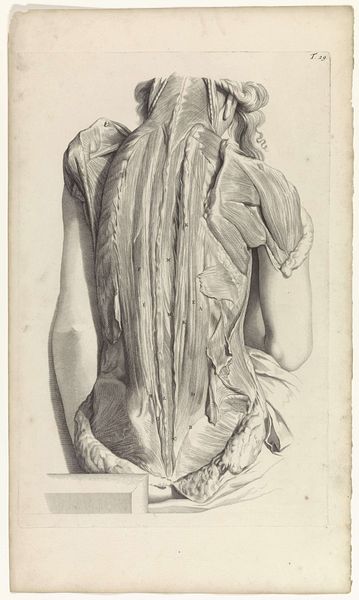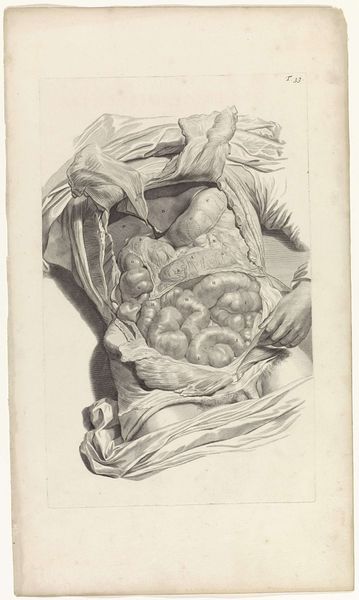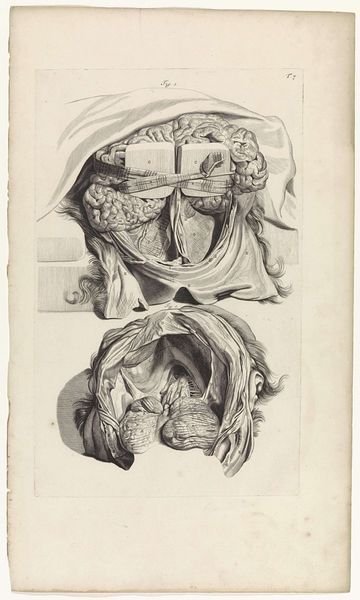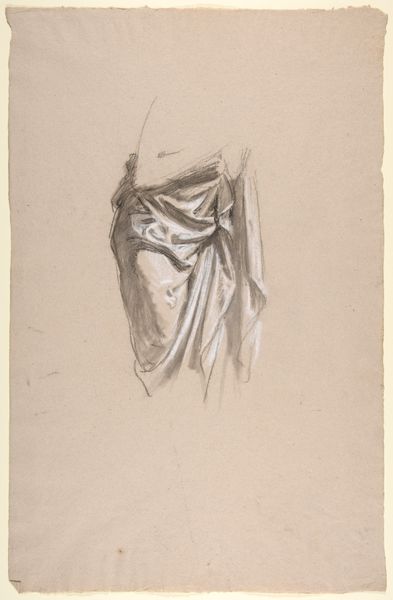
Anatomische studie van de spieren van het achterhoofd en de nek 1685
0:00
0:00
pietervangunst
Rijksmuseum
drawing, pencil, graphite
#
portrait
#
pencil drawn
#
drawing
#
baroque
#
pencil sketch
#
caricature
#
pencil drawing
#
pencil
#
graphite
#
portrait drawing
#
academic-art
Dimensions: width 322 mm, height 465 mm
Copyright: Rijks Museum: Open Domain
Editor: So, this is Pieter van Gunst's "Anatomische studie van de spieren van het achterhoofd en de nek," created around 1685. It's a graphite drawing currently housed at the Rijksmuseum. It strikes me as a particularly detailed, if slightly morbid, portrait. What is your perspective on this drawing? Curator: Well, viewed through a historical lens, this isn't morbid at all! Consider the role of anatomical studies in the 17th century. Dissection and its representation were crucial for scientific advancement. This drawing, created in a Baroque style, reflects the growing intersection of art and science, moving towards the Enlightenment. Did you notice how this artwork invites us to reflect on the cultural fascination with the human body during this era? Editor: I see what you mean. It was less about dwelling on death and more about expanding knowledge. I’m still struck by the detail. How would a study like this have been used? Curator: That’s a very insightful question! It likely served as a study aid for medical students, maybe even a preparatory sketch for a more elaborate engraving or print intended for wider distribution. The public consumption of scientific knowledge was definitely growing, and detailed, visually compelling images like these were incredibly important to disseminate these new findings. But, who had access? And what did this growing knowledge base represent in society at the time? Editor: Good questions. Maybe the increasing availability of medical knowledge represented shifts in social power? Thinking about who could afford medical education and who would be depicted in such detail… Curator: Exactly! It's not just a scientific illustration, but a window into the socio-political landscape of the time. Art reflects and reinforces power structures, doesn't it? Editor: Absolutely! I’ll never look at an anatomical drawing the same way again! I always thought of them only through scientific interest, but never cultural power structures. Curator: Glad I could help! Keep looking beneath the surface. Art is always in dialogue with its time!
Comments
No comments
Be the first to comment and join the conversation on the ultimate creative platform.
